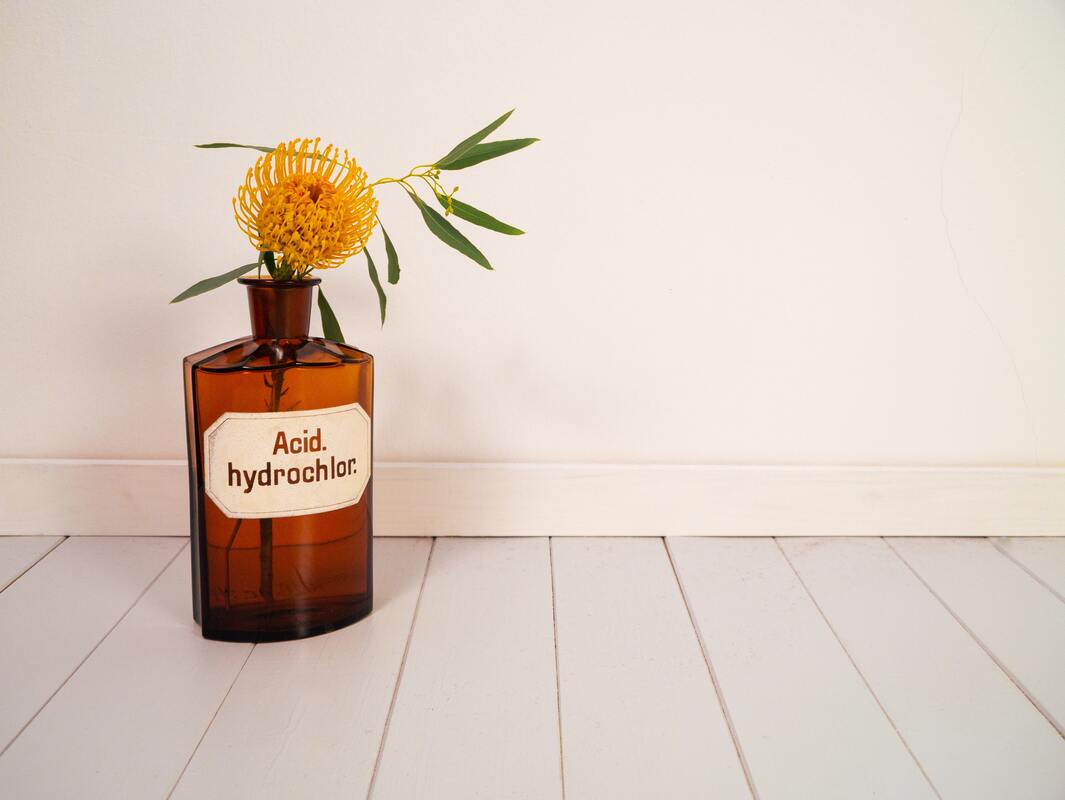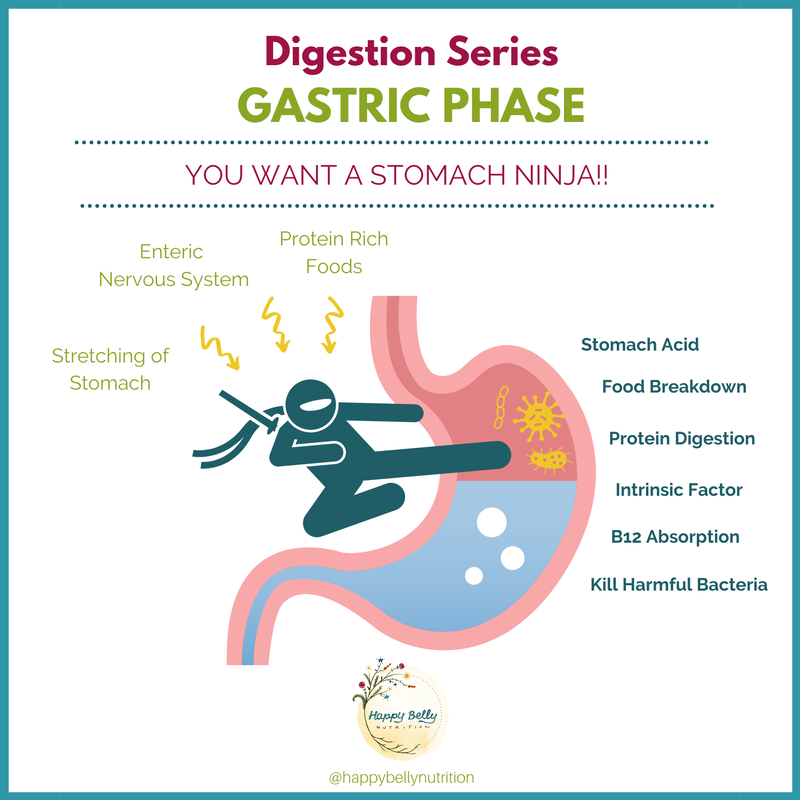|
You WANT a stomach NINJA, not a stomach COUCH POTATO. Once food is swallowed as a bolus, it enters the stomach and stretches the stomach lining, activating stretch receptors and stimulating the parietal cells to make more stomach acid. In fact, the gastric phase is responsible for 60% of stomach acid production whereas the cephalic phase is responsible for about 30%. Continuous activation of the enteric nervous system (which can be influenced by the parasympathetic and sympathetic nervous systems) also stimulates the release of gastrin causing an increase in strong and vigorous muscle contractions, and pepsinogen from chief cells. Pepsinogen, in the presence of adequate amounts of stomach acid, is then activated to pepsin, a protein digesting enzyme. As your stomach churns your food and mixes it with stomach acid and digestive juices, it also starts the process of B12 digestion and absorption. Stomach acid separates B12 from animal proteins so that B12 can bind to another protein called intrinsic factor which is only produced in the stomach. This process is essential in order to absorb B12 from our food. Plus, it can also kill potentially harmful bacteria, viruses, and parasites, coming in through your food. So now your stomach is not just a powerful blender…it is a mean blender NINJA. After foods have been properly broken down, the stomach gradually releases the stomach contents (now called chyme) into the upper small intestine. However, if you have a higher fat or higher fiber meal, stomach emptying is slowed, and can contribute to longer feelings of fullness, than if you had a low fat processed meal, like cereal. Common symptoms of low stomach acid:
I see many of the aforementioned symptoms in my practice all the time. There are many reason why someone might have low stomach acid, and sometimes there is more than one variable involved. Below I have highlighted those that I see most often.
Okay, now you likely want to know, “Do I have low stomach acid?” If you experience chronic digestive issues and any of the symptoms mentioned above, then the answer is likely yes. Once you address your stomach acid production, then you can help improve many things downstream on the river of gut health. Therefore, it is essential to address this first! How do you Test for Low Stomach Acid? The gold standard is a Heidelberg Stomach Acid Test and can get expensive, averaging around $350. Unfortunately, many GI doctors do not run this test, even when patients ask for it. If you want an alternative to this, then check out the simple at home test below to see if you struggle with low stomach acid. Baking Soda Challenge Although this test is not supported by any studies, it can be a simple and cheap way to check your stomach acid production. All you need is a fresh container of baking soda and water.
If your results suggest LOW stomach acid, then it’s time to figure out WHY and work with a gut expert. If you want my help and guidance, then make your discovery call today! References: http://www.vivo.colostate.edu/hbooks/pathphys/digestion/stomach/onemeal.html https://www.ncbi.nlm.nih.gov/books/NBK499926/ https://pubmed.ncbi.nlm.nih.gov/15184707/ https://www.ncbi.nlm.nih.gov/pmc/articles/PMC3460328/ https://pubmed.ncbi.nlm.nih.gov/20581234/ https://www.ncbi.nlm.nih.gov/pmc/articles/PMC5076771/ https://www.ncbi.nlm.nih.gov/pmc/articles/PMC3144339/ https://pubmed.ncbi.nlm.nih.gov/1494327/ https://www.cambridge.org/core/journals/proceedings-of-the-nutrition-society/article/ageing-and-the-gut/A85D096755F5F7652C262495ABF302A0 https://pubmed.ncbi.nlm.nih.gov/8612992/ https://www.ncbi.nlm.nih.gov/pmc/articles/PMC6354172/ https://pubmed.ncbi.nlm.nih.gov/2690329/ https://pubmed.ncbi.nlm.nih.gov/2858363/
0 Comments
Leave a Reply. |
AuthorLike to read? Then get your evidence based nutrition information here! All posts written by Selva Wohlgemuth, MS, RDN Functional Nutritionist & Clinical Dietitian Archives
August 2023
Categories
All
|
Providing custom functional nutrition therapy since 2015.
Follow HBN on Social Media!
©Happy Belly Nutrition, LLC 2015-2023
Proudly powered by Weebly


 RSS Feed
RSS Feed


